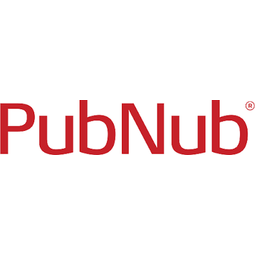技术
- 分析与建模 - 实时分析
- 应用基础设施与中间件 - 事件驱动型应用
适用行业
- 水泥
- 建筑与基础设施
适用功能
- 维护
- 销售与市场营销
用例
- 施工管理
- 实时定位系统 (RTLS)
关于客户
Event.Gives 是一个功能齐全的现场直播活动平台,专注于筹款。该公司的诞生源于对传统筹款活动效率低下且纸张繁重的流程的不满。该平台最初是作为一个简单的短信机器人开发的,允许与会者通过手机投标。这种创新方法使首次使用期间筹集的资金增加了一倍多。如今,Event.Gives 致力于尽可能实现筹款流程的多个方面的自动化,使组织能够更轻松地举办成功的筹款活动。该公司的目标是消除障碍,并使筹款过程尽可能高效和有吸引力。
挑战
Event.Gives 的诞生是出于对传统筹款活动效率低下且纸张繁重的流程的不满。该公司的联合创始人萨姆·斯塔利 (Sam Staley) 在一次小学筹款活动中对繁琐的投标流程感到特别沮丧。这个过程不仅效率低下,而且未能最大限度地发挥捐赠的潜力。我们面临的挑战是创建一个解决方案来简化投标流程、提高参与度并最终筹集更多资金。 COVID-19 大流行的出现使事情变得更加复杂,许多现场活动和筹款活动被取消。 Event.Gives 需要调整并寻找支持虚拟活动并让人们重返工作岗位的方法。
解决方案
Event.Gives 采用 PubNub 的实时推送技术来为其创新筹款平台提供支持。该平台举办虚拟、现场和混合活动,重点关注慈善和捐赠。它实时传输筹款拍卖出价,这有助于增加捐款,并为管理员、与会者和活动工作人员之间的不同沟通渠道提供支持。除了实时捐赠选项外,该平台还提供现场和无声拍卖、抽奖或物品销售。它还提供简单的活动设置、促销、移动签到和签出选项、自动筹款工具和即时出价更新等服务。 PubNub 的实时技术对于 Event.Gives 的运作方式至关重要。可靠的实时更新使他们能够共享出价通知、广播活动促销更新、发送签到链接等。这些功能有助于 Event.Gives 无缝托管和自动化筹款体验,并使组织成功的活动变得更加容易。
运营影响
数量效益

Case Study missing?
Start adding your own!
Register with your work email and create a new case study profile for your business.
相关案例.

Case Study
System 800xA at Indian Cement Plants
Chettinad Cement recognized that further efficiencies could be achieved in its cement manufacturing process. It looked to investing in comprehensive operational and control technologies to manage and derive productivity and energy efficiency gains from the assets on Line 2, their second plant in India.

Case Study
IoT System for Tunnel Construction
The Zenitaka Corporation ('Zenitaka') has two major business areas: its architectural business focuses on structures such as government buildings, office buildings, and commercial facilities, while its civil engineering business is targeted at structures such as tunnels, bridges and dams. Within these areas, there presented two issues that have always persisted in regard to the construction of mountain tunnels. These issues are 'improving safety" and "reducing energy consumption". Mountain tunnels construction requires a massive amount of electricity. This is because there are many kinds of electrical equipment being used day and night, including construction machinery, construction lighting, and ventilating fan. Despite this, the amount of power consumption is generally not tightly managed. In many cases, the exact amount of power consumption is only ascertained when the bill from the power company becomes available. Sometimes, corporations install demand-monitoring equipment to help curb the maximum power demanded. However, even in these cases, the devices only allow the total volume of power consumption to be ascertained, or they may issue warnings to prevent the contracted volume of power from being exceeded. In order to tackle the issue of reducing power consumption, it was first necessary to obtain an accurate breakdown of how much power was being used in each particular area. In other words, we needed to be able to visualize the amount of power being consumed. Safety, was also not being managed very rigorously. Even now, tunnel construction sites often use a 'name label' system for managing entry into the work site. Specifically, red labels with white reverse sides that bear the workers' names on both sides are displayed at the tunnel work site entrance. The workers themselves then flip the name label to the appropriate side when entering or exiting from the work site to indicate whether or not they are working inside the tunnel at any given time. If a worker forgets to flip his or her name label when entering or exiting from the tunnel, management cannot be performed effectively. In order to tackle the challenges mentioned above, Zenitaka decided to build a system that could improve the safety of tunnel construction as well as reduce the amount of power consumed. In other words, this new system would facilitate a clear picture of which workers were working in each location at the mountain tunnel construction site, as well as which processes were being carried out at those respective locations at any given time. The system would maintain the safety of all workers while also carefully controlling the electrical equipment to reduce unnecessary power consumption. Having decided on the concept, our next concern was whether there existed any kind of robust hardware that would not break down at the construction work site, that could move freely in response to changes in the working environment, and that could accurately detect workers and vehicles using radio frequency identification (RFID). Given that this system would involve many components that were new to Zenitaka, we decided to enlist the cooperation of E.I.Sol Co., Ltd. ('E.I.Sol') as our joint development partner, as they had provided us with a highly practical proposal.

Case Study
Splunk Partnership Ties Together Big Data & IoT Services
Splunk was faced with the need to meet emerging customer demands for interfacing IoT projects to its suite of services. The company required an IoT partner that would be able to easily and quickly integrate with its Splunk Enterprise platform, rather than allocating development resources and time to building out an IoT interface and application platform.

Case Study
Bridge monitoring in Hamburg Port
Kattwyk Bridge is used for both rail and road transport, and it has played an important role in the Port of Hamburg since 1973. However, the increasing pressure from traffic requires a monitoring solution. The goal of the project is to assess in real-time the bridge's status and dynamic responses to traffic and lift processes.

Case Study
Bellas Landscaping
Leading landscaping firm serving central Illinois streamlines operations with Samsara’s real-time fleet tracking solution: • 30+ vehicle fleet includes International Terrastar dump trucks and flatbeds, medium- and light-duty pickups from Ford and Chevrolet. Winter fleet includes of snow plows and salters.




